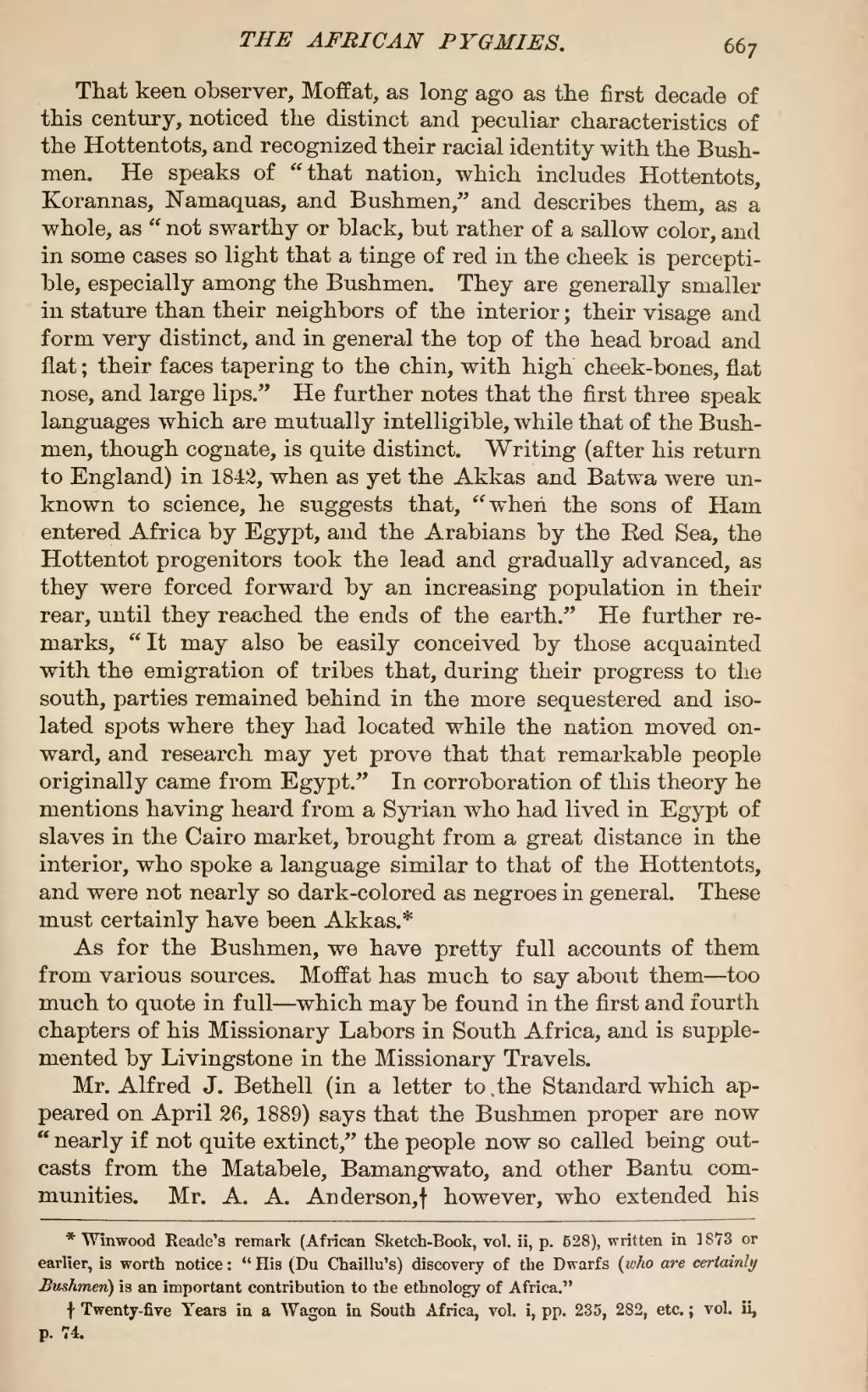That keen observer, Moffat, as long ago as the first decade of this century, noticed the distinct and peculiar characteristics of the Hottentots, and recognized their racial identity with the Bushmen. He speaks of "that nation, which includes Hottentots, Korannas, Namaquas, and Bushmen," and describes them, as a whole, as "not swarthy or black, but rather of a sallow color, and in some cases so light that a tinge of red in the cheek is perceptible, especially among the Bushmen. They are generally smaller in stature than their neighbors of the interior; their visage and form very distinct, and in general the top of the head broad and flat; their faces tapering to the chin, with high cheek-bones, flat nose, and large lips." He further notes that the first three speak languages which are mutually intelligible, while that of the Bushmen, though cognate, is quite distinct. Writing (after his return to England) in 1842, when as yet the Akkas and Batwa were unknown to science, he suggests that, "when the sons of Ham entered Africa by Egypt, and the Arabians by the Red Sea, the Hottentot progenitors took the lead and gradually advanced, as they were forced forward by an increasing population in their rear, until they reached the ends of the earth." He further remarks, "It may also be easily conceived by those acquainted with the emigration of tribes that, during their progress to the south, parties remained behind in the more sequestered and isolated spots where they had located while the nation moved onward, and research may yet prove that that remarkable people originally came from Egypt." In corroboration of this theory he mentions having heard from a Syrian who had lived in Egypt of slaves in the Cairo market, brought from a great distance in the interior, who spoke a language similar to that of the Hottentots, and were not nearly so dark-colored as negroes in general. These must certainly have been Akkas.[1]
As for the Bushmen, we have pretty full accounts of them from various sources. Moffat has much to say about them—too much to quote in full—which may be found in the first and fourth chapters of his Missionary Labors in South Africa, and is supplemented by Livingstone in the Missionary Travels.
Mr. Alfred J. Bethell (in a letter to,the Standard which appeared on April 26, 1889) says that the Bushmen proper are now "nearly if not quite extinct," the people now so called being outcasts from the Matabele, Bamangwato, and other Bantu communities. Mr. A. A. Anderson,[2] however, who extended his
- ↑ Winwood Reade's remark (African Sketch-Book, vol. ii, p. 528), written in 1873 or earlier, is worth notice: "His (Du Chaillu's) discovery of the Dwarfs (who are certainly Bushmen) is an important contribution to the ethnology of Africa."
- ↑ Twenty-five Years in a Wagon in South Africa, vol. i, pp. 235, 282, etc.; vol. ii, p. 74.

